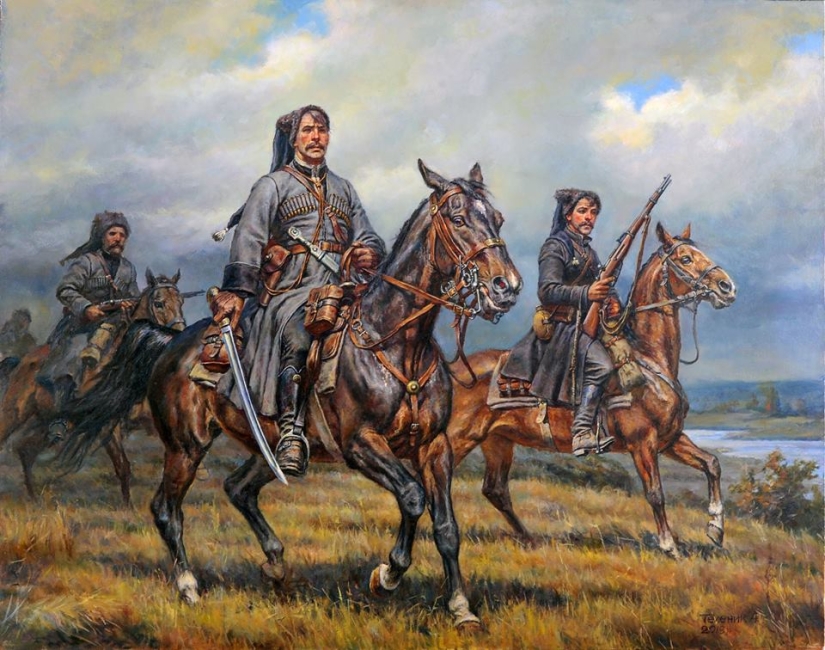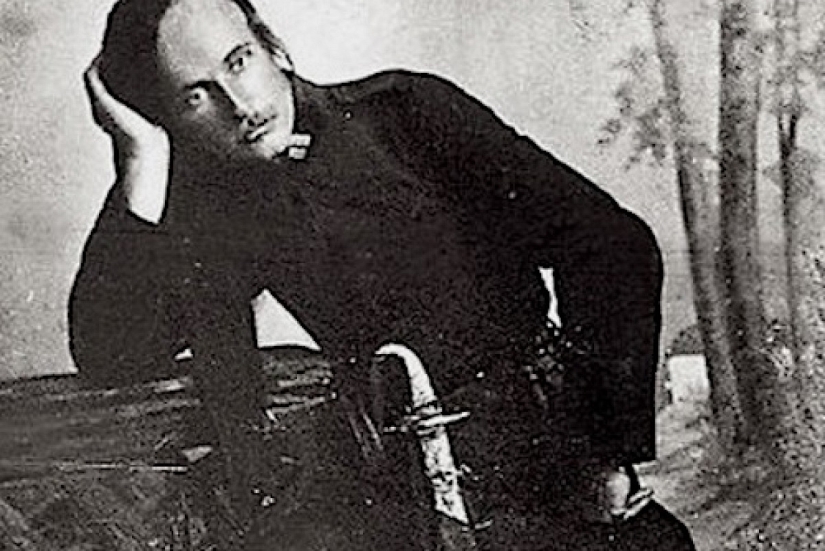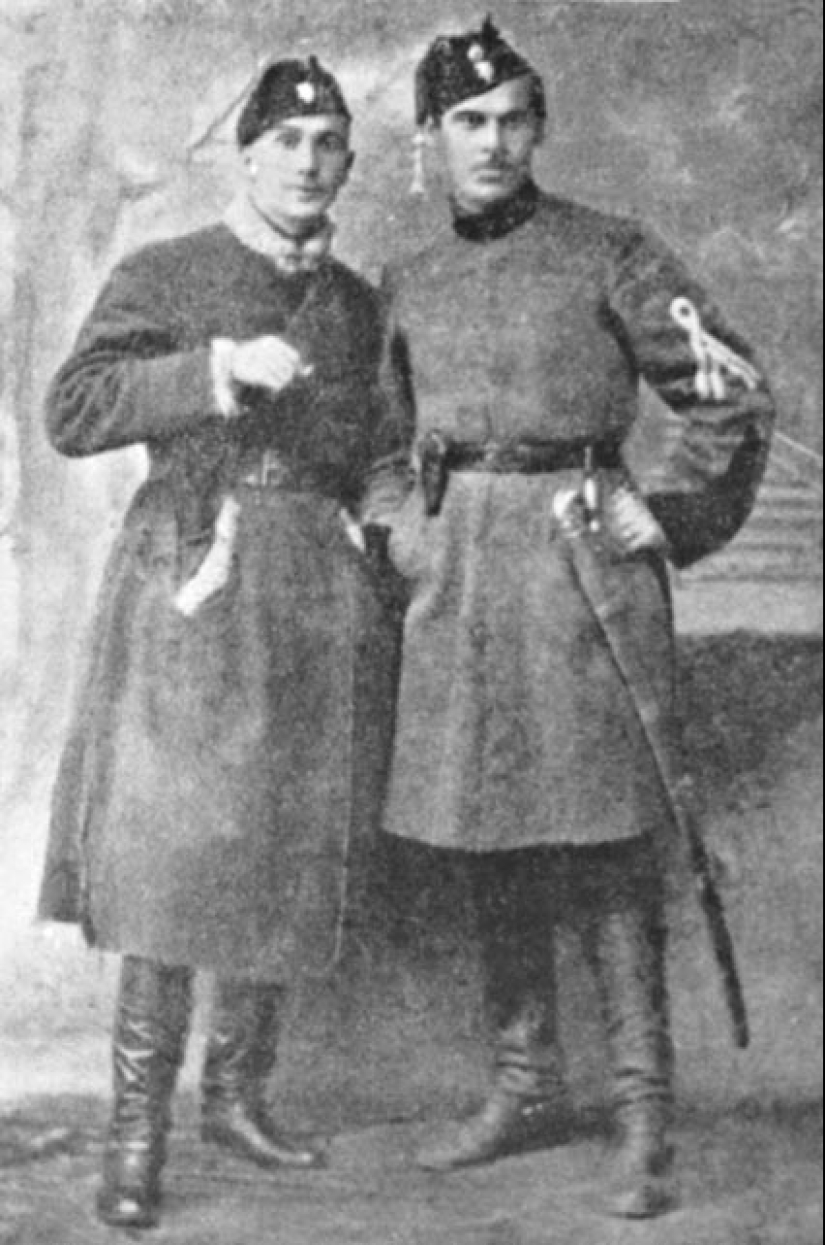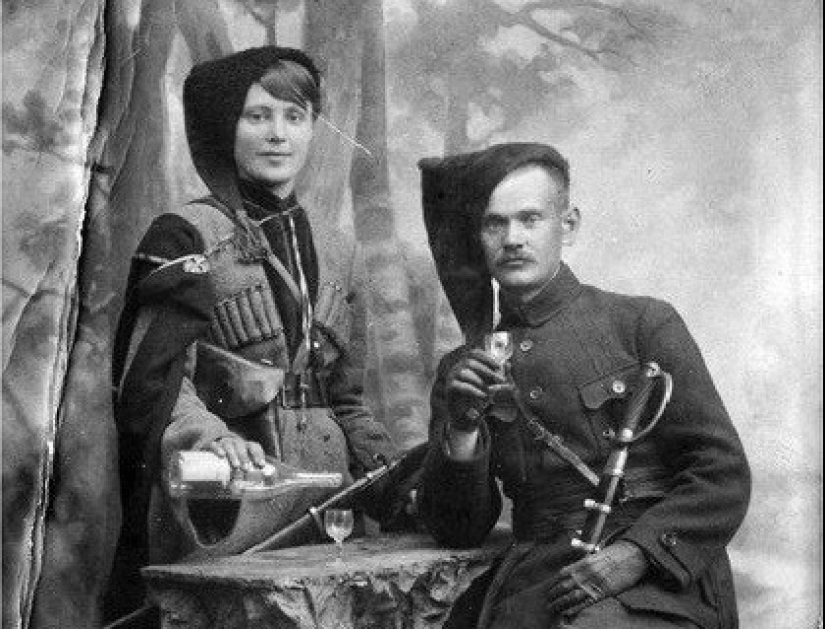"Black Cossacks" Ukrainian Cossacks who did not take prisoners
Categories: Conflict | Europe | History | Nations
By Pictolic https://pictolic.com/article/black-cossacks-ukrainian-cossacks-who-did-not-take-prisoners.html"Black Cossacks" was the most fearsome fighters of the Civil war in Ukraine. They were remembered not only for his military exploits, but also appearance. All the Cossacks dressed in black clothes and wore on his head a hat with a long slikami. They fought under the flag with a skull and the slogan "Ukraine or death!". The Cossacks corresponded to cry. They did not take the enemy prisoner yourself and never give up.

After the abdication of Emperor Nicholas II, national outskirts of the former Russian Empire started to declare its independence. With the coming to power of the Bolsheviks, the fire of Civil war flared in full force. Ukraine is no exception. With the support of the Germans, the former tsarist army General Pavlo Skoropadsky dispersed Central Rada, declared himself Hetman and began building the Ukrainian state under the protectorate of the German Empire.
 Hetman Pavlo Petrovych Skoropadskyi
Hetman Pavlo Petrovych Skoropadskyi
To protect the independence formed the national armed forces. One of the most combat-ready units became the 2nd cavalry regiment of Colonel Petro Bolbochan, who fought as part of a Separate Zaporozhye division. The regiment acted equestrian hundreds of icons Petro Dyachenko. Cossacks used for lightning raids and intelligence. In the army fighters Dyachenko was considered the equivalent of a modern special forces.
During the fighting in the Kharkov province at the railway station Lozova, hundreds of fighters recaptured Makhno two cars in gray and black cloth and three carriages of sugar. In Kremenchug Dyachenko ordered a tailor to sew for its Cossacks several hundred sets of molds and paid got in a battle with sugar.
 The commander of the hundreds of icons Peter Gavrilovich Dyachenko
The commander of the hundreds of icons Peter Gavrilovich Dyachenko
Hetman Skoropadsky relied on the revival of the Cossack traditions. This was especially the case for the army, where he introduced the forgotten rank and form elements in the form of hats with slikami and trousers. All fighters hundreds Dyachenko wore the hairstyle of the Cossacks-Cossacks — long "Chub" on his shaved head and moustache.
Photo "black Cossacks":



Its second name — "chernoluchye" — they got the long black Shlyk on the hat. Beautiful black form and mustache Chub created fighters, the image of a dashing swordsman, which seemed to come from the distant times of Hetman Sahaidachny and Khmelnytsky. When the chieftain of Bolbochan came to see a hundred, I was struck by the appearance of the Cossacks and said that even the Royal guard in the background fades.
The basis of the "black Cossacks" were dashing slayers and cavalrymen of the old Russian army. Officer of the 2nd regiment Zaporozhye centurion Nicephorus Avramenko recalled:
When the UPR army was forced to retreat through the arrangement of the Romanian troops, the "chernoluchye" was the only compound that refused to surrender their weapons and returned to the territory of Ukraine with all military equipment. Former commander of the army of the UNR General Mikhail Omelyanovich-Pavlenko wrote:
In 1920, the 10-strong army made a Winter campaign, which returned 4300 exhausted and wounded soldiers. After the RAID, the regiment of "chernoknizhnikov" numbering 500 swords became a legend. In battle, they showed themselves to be a formidable force and got a lot of guns, carriages, guns and other weapons captured.
In the winter of 1920, the "black regiment" gone with the left-Bank Ukraine and connected with the poles. All spring and summer Cossacks fought with the Bolsheviks. 2 Oct 1920 in Riga, negotiations were held between Poland and the Soviet Union. The war was terminated, and the regiment was interned. Earlier Petro Bolbochan shot for treason.

Petr Fedorovich Bolbochan
Petro Dyachenko remained in Poland, where he served in the Polish army. During the great Patriotic war, he sided with the Germans and was commanded by the collaborationist anti-tank brigade "Free Ukraine". After the victory of the allies moved to the United States, grew roses and advised by American intelligence. Dyachenko died in Philadelphia in 1965.
Recent articles

French cinema can easily be called a unique direction in art, which is fundamentally different from what he used to do in ...

Fans of actress Monica Bellucci do not associate her style of clothing with black dresses in vain. A famous Italian woman has ...
Related articles

In 1927, the historian Mykola Gorban found in the Kharkiv historical archives of the documents of the investigation conducted in ...

45 years have passed since the end of the Vietnam War, but this largest armed conflict after the Second World War still continues ...

Don, Siberian, Greben, Kuban and other Cossack integral part of the Russian people. They owned land in return for a commitment to ...

What could be sweeter cats, dogs and other animals? That's right — nothing! Therefore, we have compiled for you the lovely, kind ...